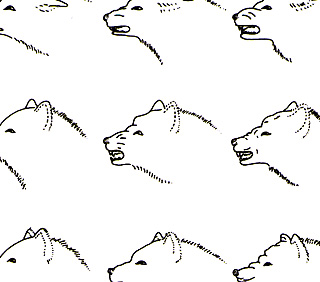Splash art originated in the 1940s in comics, where the term referred to a full page of visuals at the front of a book. Pages were designed to engage the reader's imagination along the lines of the comic's broader concept, while standing independent from the narrative. In the late 1990s, when the widespread use of the application Flash opened up new possibilities for animation and interactive media, the idea of the splash page migrated to web design. Online splash art brought visual excitement to a webpage when low modem speeds made it impractical to post large or moving images amid a site's textual content.
Rhizome introduced splash pages to its web site in 1998 in order to display artwork with greater immediacy....
Rhizome introduced splash pages to its web site in 1998 in order to display artwork with greater immediacy....
Launch Project 
 fear / rage, 2001
fear / rage, 2001
About
Curt Cloninger's graph plots net.art and web design as fear and rage, respectively, as though art shrinks timidly from the mainstream while design aggressively seeks out attention. The combination of the two at their extremities is a potent mix, while the absence of either one, we might assume, represents the position of the indifferent, uncreative user. Cloninger's graph is another visualization of the opposition between high-tech design and conceptual art that he expressed in his 2001 essay, "Conceptual Art Sucks": "the 'real' artist is a 7-foot tall, dreadlocked drum and bass DJ broadcasting via radio, satellite, broadband and cable. The 'conceptual' artist is a little 12-year-old kid mumbling into a paper cup." Cloninger is an assistant professor of multimedia arts & sciences at the University of North Carolina at Asheville.
http://lab404.com
http://lab404.com